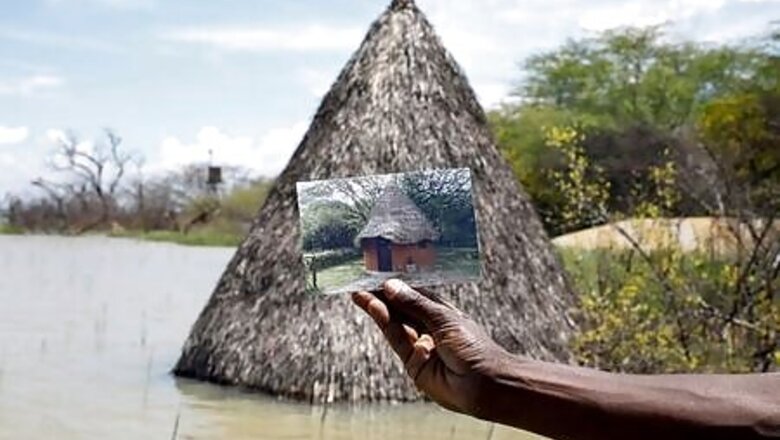
views
BARINGO, Kenya: The fresh waters of Kenya’s Lake Baringo teem with birds, fish, hippopotamuses and crocodiles and sustain tens of thousands of people. But none of them can survive in the alkaline Lake Bogoria nearby.
Now heavy rainfall and ecological destruction means the two lakes are rising and may merge.
“It will be an ecological disaster if the two lakes meet … There is only a small gap left,” said Jackson Komen, senior warden for the government-run Kenya Wildlife Service (KWS) for Lake Baringo conservation area.
Baringo, which irrigates land and provides driking water, has expanded 60% to 270 square kilometres (105 square miles) in the last seven years, he said. Lake Bogoria has swollen by a quarter to 43 square kilometres.
Conservationists said the rising waters are due to combination of unusually heavy rains and the silting up of the lakes.
Tor-Gunnar Vanegen, a scientist at the Nairobi-based World Agroforestry centre, said deforestation was causing erosion on nearby Tugen hills and the soil was washing into lake.
“That siltation is causing the shallow lake to rise,” he told Reuters.
The flooding is driving farmers from their land and residents from their homes.
Three generations of Roberts grew up on Baringo’s shores but the thatched roofs of their safari camp are now forlorn islands surrounded by water. The distance between the two lakes has halved.
“It is disheartening to watch the work that was done by your father and mother, and the work we have done ourselves, being destroyed by water,” said Murray Roberts, whose father built the camp.
Farmers say their grazing has been destroyed.
“I now have to start all over at new grounds. For now I live with my son close by,” said Lechaki Parsaalach, who has lost nine acres of land and his home.
(Additional reporting and writing by Duncan Miriri; Editing by Katharine Houreld and Andrew Heavens)
Disclaimer: This post has been auto-published from an agency feed without any modifications to the text and has not been reviewed by an editor



















Comments
0 comment